Discovering the world of coffee can be a delightful adventure, especially when it comes to unique varieties like Moka Matari. This exceptional coffee is not just about its taste; it’s steeped in history and rich characteristics that make it stand out. If you’re a coffee lover looking to deepen your appreciation of this special brew, you’re in the right place.
Moka Matari, hailing from the unique landscapes of Yemen, offers a flavor profile that is distinct and captivating. The combination of its origins and the specifics of its cultivation brings forth a cup that tells a story with every sip. As you explore this article, you’ll uncover the hidden treasures that make Moka Matari a must-try for any coffee enthusiast.
In addition to its fascinating history, the cultivation practices of Moka Matari play a significant role in shaping its quality and flavor. Understanding where and how this coffee is grown will enhance your appreciation and enjoyment of this exquisite brew. We’ll dive into the environmental factors that contribute to its unique profile, making it a true gem among coffee varieties.
Finally, we’ll guide you through the best roasting and brewing methods to unlock the full potential of Moka Matari. Whether you’re a beginner or a seasoned barista, these tips and recipes will help you savor every drop of this remarkable coffee. So, grab your favorite mug and let’s embark on this flavorful journey together!
- Discover the rich history and unique characteristics of Moka Matari.
- Learn about the cultivation secrets that enhance its quality.
- Get tips on roasting and brewing to fully enjoy this exquisite coffee.
What is Moka Matari? History and Characteristics
Origins of Moka Matari
Moka Matari has its roots in the ancient coffee-growing regions of Yemen, which is often referred to as the birthplace of coffee. The unique climate and high-altitude conditions create an ideal environment for coffee cultivation. This area is characterized by its rich, volcanic soil and distinct microclimates that contribute to the distinctiveness of Moka Matari beans.
As you delve into the origins, you’ll find that Moka Matari has a rich history intertwined with the cultural practices of the Yemeni people. Historically, coffee was not just a beverage but a part of social and spiritual gatherings. It played a role in trade routes, connecting Yemen with other parts of the world, making it an essential commodity that has shaped the history of coffee.
Over centuries, specific farming techniques have been handed down through generations, emphasizing the importance of traditional practices in cultivating Moka Matari. These methods often include organic farming and careful hand-picking, ensuring that only the best beans are selected for processing. This dedication to craftsmanship results in a product that reflects not just the land but also the passion of those who grow it.
- Moka Matari originates from Yemen, the birthplace of coffee.
- The unique climate and high altitude create ideal growing conditions.
- Traditional farming techniques enhance the quality of the beans.
Unique Flavors and Aromas
What truly sets Moka Matari apart are its unique flavors and aromas. As you take your first sip, you’ll notice a delightful balance of sweetness and acidity, often accompanied by notes of chocolate and spice. This complexity is a testament to the careful cultivation and processing methods used by Yemen’s coffee farmers.
These beans are known for their full-bodied richness, which provides a satisfying mouthfeel that lingers pleasantly. The aroma of Moka Matari is often described as fragrant and floral, inviting you to savor the experience even before the first sip. It’s this combination of flavors and aromas that make Moka Matari a favorite among coffee connoisseurs.
Additionally, the tasting experience can vary based on how the coffee is brewed. Different brewing methods can highlight different aspects of Moka Matari’s profile, allowing you to explore its nuances. Whether you prefer a classic French press or a modern espresso, experimenting with your brewing technique can lead to delightful discoveries.

If you’re intrigued by the unique profile of Moka Matari coffee, you might also enjoy exploring its historical context and flavor nuances in more depth. Check out the article Discover the Allure of Matari Coffee: Its History and Flavor for an in-depth look at what makes this coffee so special.
- Moka Matari features a balance of sweetness and acidity.
- Common tasting notes include chocolate and spice.
- Brewing methods can influence the flavor profile, enhancing the experience.
Secrets of Cultivation and Quality
Regions Where Moka Matari is Grown
Moka Matari is cultivated in some of the most pristine coffee-growing regions of Yemen. These areas, often located in the highlands, are known for their rich biodiversity and unique microclimates. The elevation plays a crucial role in developing the beans’ flavor, allowing them to mature slowly and absorb the nutrients from the soil.
As you explore these regions, you’ll find that the farmers are deeply connected to their land. They understand the nuances of their environment and how it influences the coffee they produce. This passion for the land translates into every cup of Moka Matari, offering a taste of Yemen’s natural beauty.
- Moka Matari is grown in Yemen’s highland regions.
- The elevation contributes to the unique flavors of the coffee.
- Local farmers have a deep connection to their land and cultivation methods.
Impact of Soil and Climate
The soil in which Moka Matari is grown is another critical factor that enhances its quality and flavor. Yemen’s volcanic soil is rich in minerals, providing essential nutrients that the coffee plants need to thrive. This nutrient-rich environment helps develop the beans’ complexity, resulting in the distinct flavors that coffee lovers cherish.
In addition to the soil, the climate plays a significant role in shaping Moka Matari’s characteristics. The combination of warm days and cool nights creates the ideal conditions for the coffee cherries to ripen perfectly. This climatic balance allows the beans to develop a harmonious blend of sweetness and acidity, making each cup a delightful experience.
Moreover, the traditional practices employed by Yemeni farmers, such as hand-picking the cherries at peak ripeness, ensure that only the best beans make it to processing. This meticulous attention to detail is what sets Moka Matari apart from other coffee varieties. The commitment to quality reflects the cultural heritage and pride that goes into every batch of coffee.
As you continue to explore Moka Matari, understanding these cultivation secrets offers a deeper appreciation for what makes this coffee so exceptional. The next time you brew a cup, you’ll not only savor its unique flavors but also appreciate the journey it took to reach your mug.
- Yemen’s volcanic soil enriches the coffee’s flavor profile.
- The climate ensures optimal ripening of coffee cherries.
- Traditional hand-picking methods guarantee only the best beans are selected.
- Understanding these factors deepens the appreciation for Moka Matari.
Roasting Tips and Recommendations
Basics of Roasting
Roasting is a crucial step in bringing out the unique flavors of Moka Matari. The process transforms the green coffee beans into the aromatic brown beans we love. As you embark on your roasting journey, it’s important to understand the basics. The key is to apply consistent heat to the beans while monitoring their color and aroma. This helps unlock the complex flavors that make Moka Matari special.
During roasting, you’ll notice that the beans go through various stages, from the initial dry phase to the first crack, and eventually to the desired roast level. Each stage contributes different flavor notes, so keeping an eye on the beans is essential. Remember, the goal is to highlight the natural characteristics of Moka Matari, ensuring that its rich history and unique profile shine through in every cup.
- Roasting transforms green beans into flavorful coffee.
- Monitor color and aroma during the roasting process.
- Each stage of roasting contributes to the final flavor profile.
Ideal Roast Level for Moka Matari
When it comes to Moka Matari, the ideal roast level can significantly influence your tasting experience. A medium roast is often recommended as it strikes a balance between highlighting the coffee’s natural sweetness and maintaining its complex acidity. This roast level allows the distinctive chocolate and spice notes to emerge beautifully without overpowering the delicate flavors.
On the other hand, a darker roast may bring out bolder, smoky flavors, which can overshadow the nuanced characteristics of Moka Matari. While some coffee enthusiasts enjoy the robustness of a dark roast, it’s worth experimenting to find what best resonates with your palate. A light roast, although less common for Moka Matari, can also be an interesting choice, showcasing its floral notes and vibrant acidity.
As you explore your roasting preferences, consider investing in a quality coffee roaster that allows for precise control over the temperature and time. This will give you the flexibility to experiment with different roast levels and discover how they affect the flavor profile of Moka Matari. The key is to take notes during your roasting sessions, so you can refine your technique and find the perfect roast that suits your taste.
Ultimately, roasting Moka Matari is both an art and a science. Embrace the process, enjoy the journey, and don’t hesitate to share your experiences with fellow coffee lovers. The world of coffee is vast, and with each roast, you’ll uncover new aspects of this remarkable brew.
- A medium roast is ideal for balancing sweetness and acidity.
- Darker roasts may overshadow Moka Matari’s nuances.
- Invest in a quality roaster for better control and experimentation.
- Take notes to refine your roasting technique for the perfect cup.
Brewing Methods and Enjoyment
Choosing Brewing Equipment
As you dive deeper into the world of Moka Matari, the choice of brewing equipment becomes essential. The right tools can elevate your coffee experience, allowing you to fully appreciate the unique features of this exceptional brew. Whether you’re a beginner or a seasoned coffee enthusiast, investing in quality equipment can make all the difference.
When selecting your brewing method, consider what flavors you want to highlight. For instance, a French press can enhance the body and richness of Moka Matari, while a pour-over method may showcase its intricate flavors and aromas. Each brewing technique brings out different characteristics, so it’s worth experimenting to find what suits your taste best.
- French press emphasizes body and richness.
- Pour-over method highlights intricate flavors and aromas.
- Espresso can deliver a concentrated taste experience.
Recipes to Fully Enjoy Moka Matari
Now that you have your brewing equipment, let’s explore some delicious recipes that will help you savor Moka Matari to the fullest. The beauty of this coffee lies not just in its origins and characteristics but also in how you choose to prepare it.
One popular way to enjoy Moka Matari is through a classic French press. Start with coarsely ground beans, using about two tablespoons per six ounces of hot water. Let it steep for about four minutes before pressing down the plunger. This method enhances the coffee’s full-bodied richness, allowing the chocolate and spice notes to shine through.
Alternatively, if you’re in the mood for something a bit different, consider making a Moka Matari cold brew. Combine coarsely ground coffee with cold water at a 1:4 ratio and let it steep in the fridge for 12 to 24 hours. Strain it through a coffee filter or a fine mesh sieve for a smooth, refreshing cup that highlights the coffee’s sweet and floral notes.
Lastly, don’t forget to experiment with additives. A splash of milk or a sprinkle of cinnamon can add another layer of flavor, making your Moka Matari experience even more delightful. The key is to enjoy the process and find what resonates with your palate.

If you’re eager to further expand your knowledge about coffee varieties, you’ll find that exploring the unique characteristics of different beans can be incredibly rewarding. For instance, you might enjoy diving into our article on Discover the Allure of Mandheling G1! Tips on Roasting, Brewing, and Storing, which offers insights into how to roast and brew this exceptional coffee type to bring out its best flavors.
- French press recipe: coarsely ground Moka Matari, steep for 4 minutes.
- Cold brew: steep for 12 to 24 hours for a smooth flavor.
- Experiment with milk and spices for added depth.
Summary of Moka Matari: Features and Insights
As we wrap up our exploration of Moka Matari, it’s clear that this coffee offers more than just a delightful flavor. Its rich history and unique characteristics truly set it apart in the world of coffee. From its origins in Yemen to the meticulous cultivation methods employed by local farmers, Moka Matari embodies a deep connection to its land and heritage. Each cup tells a story, inviting coffee lovers to appreciate the artistry behind it.
The flavor profile of Moka Matari is another highlight worth mentioning. With a perfect balance of sweetness and acidity, the coffee features notable tasting notes such as chocolate and spice. The full-bodied richness and inviting aroma make it a favorite among many coffee enthusiasts. The way it interacts with different brewing methods allows for a versatile experience, encouraging experimentation and personal preferences.
Lastly, the secrets of its cultivation, including the impact of soil and climate, enhance Moka Matari’s quality. Understanding these elements not only enriches our appreciation for this exceptional brew but also connects us to its cultural roots. So, the next time you enjoy a cup of Moka Matari, take a moment to reflect on the journey it has taken to reach your mug.
- Moka Matari is deeply rooted in Yemeni culture and history.
- The coffee features a unique flavor profile with notes of chocolate and spice.
- Its cultivation secrets, including soil and climate, contribute to its exceptional quality.
We’d love to hear about your experiences with Moka Matari or any favorite brewing methods you have! Share your thoughts in the comments below.



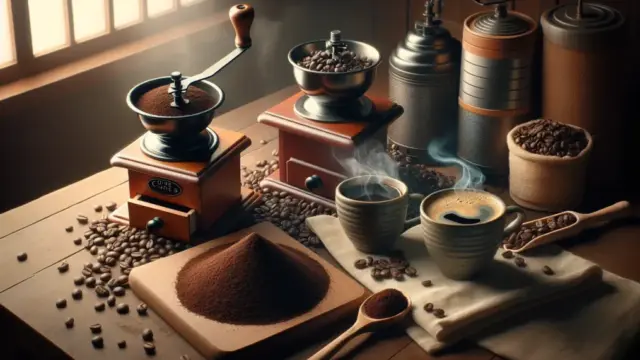




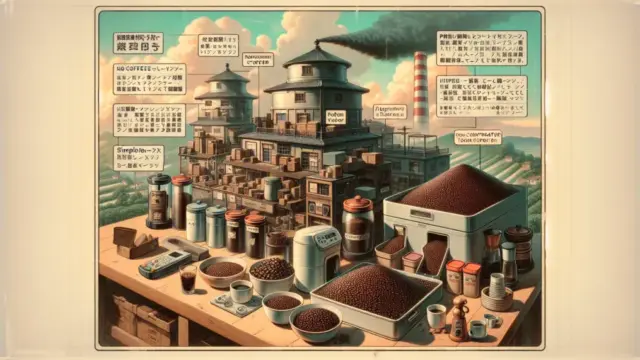







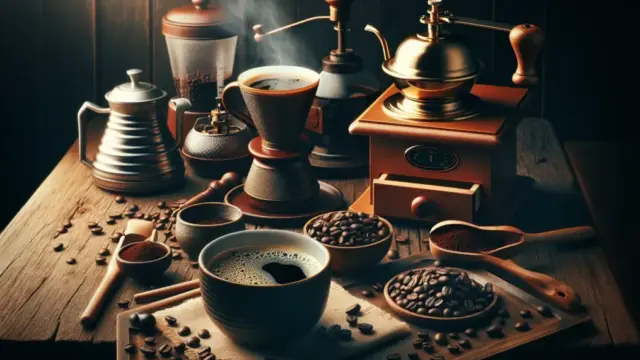





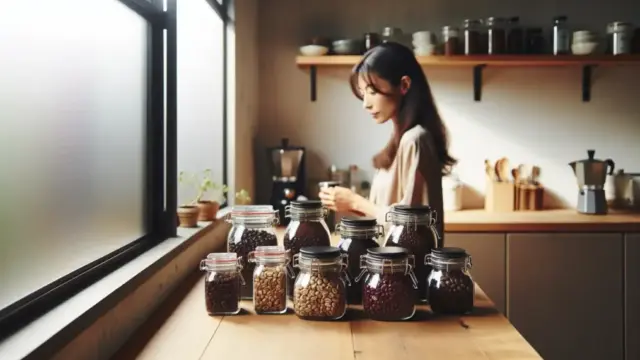



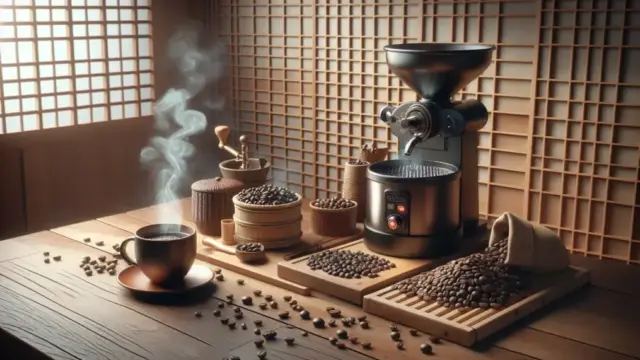











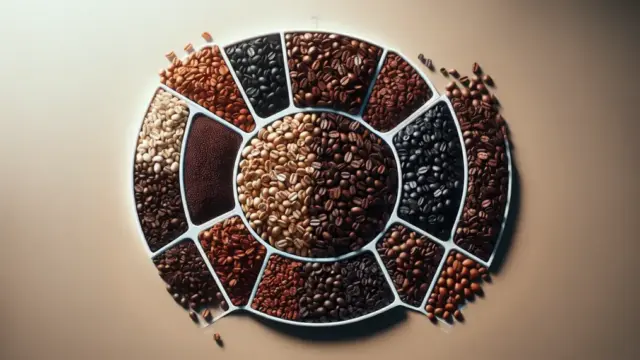























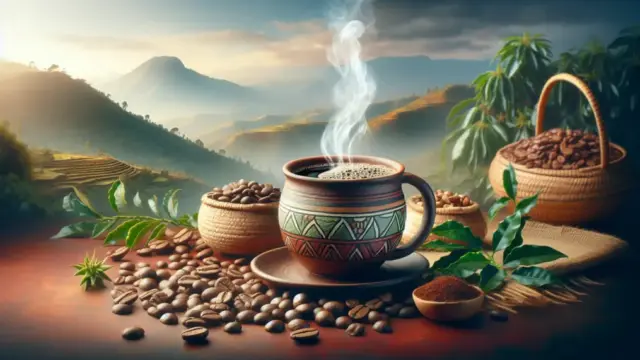















Comment